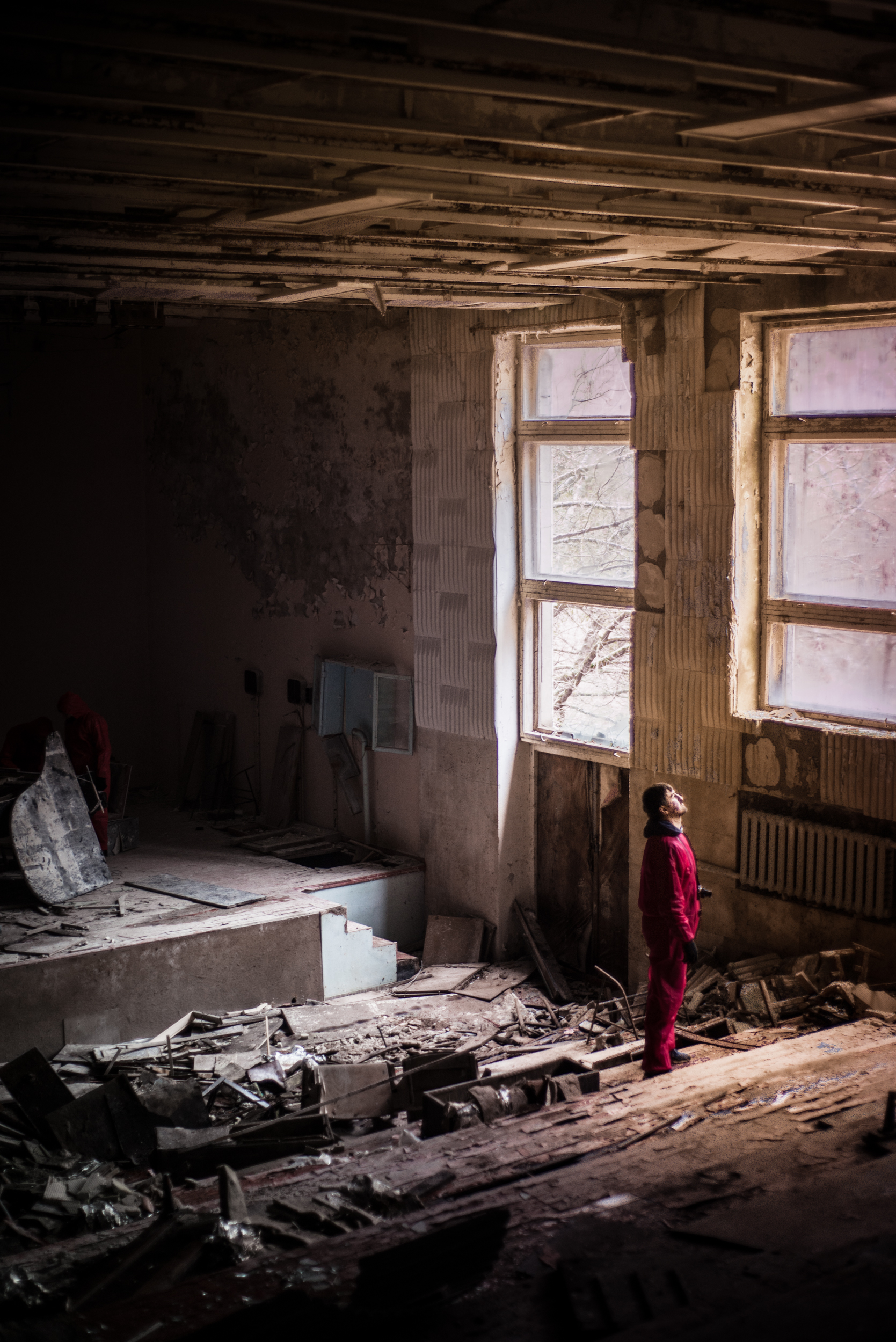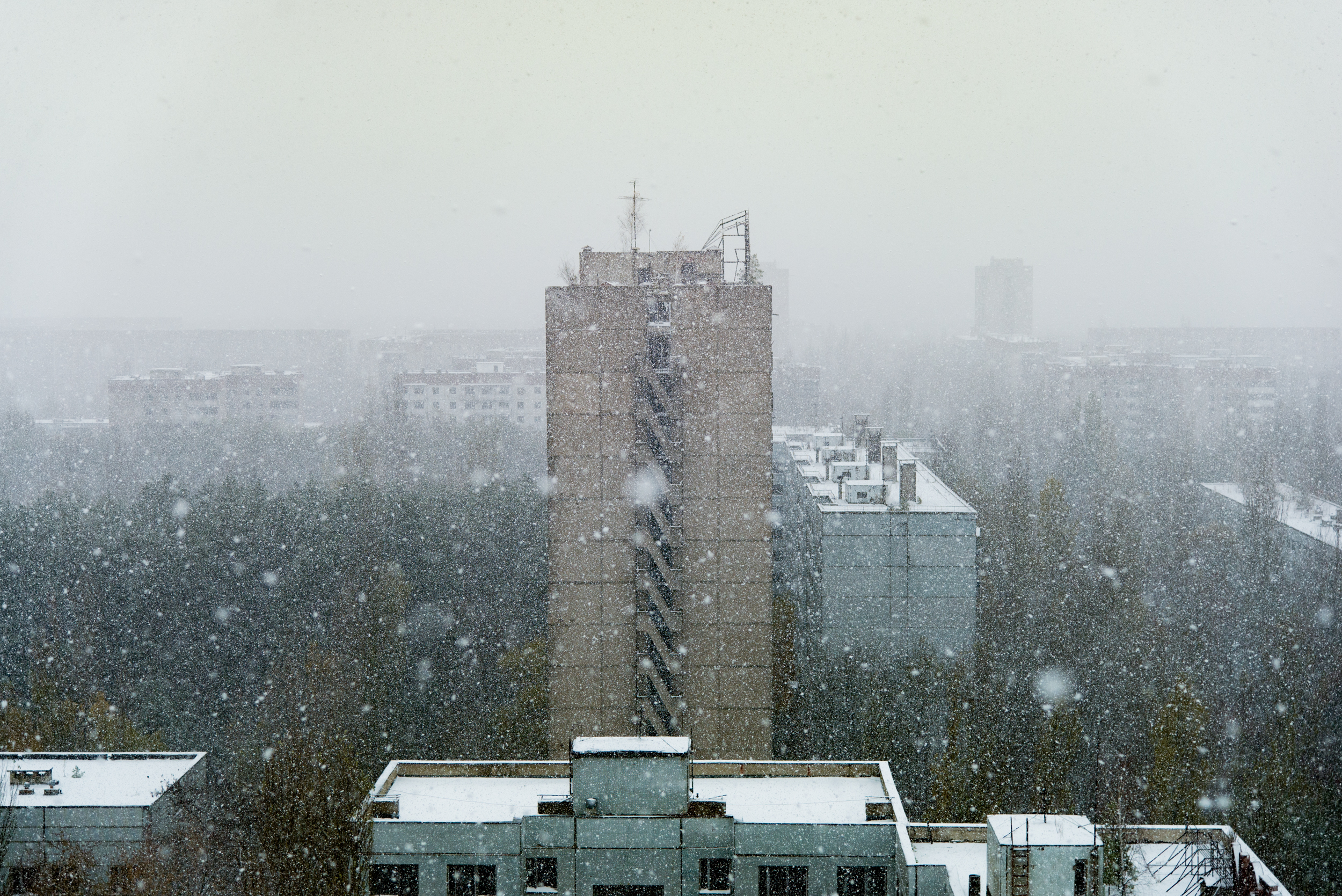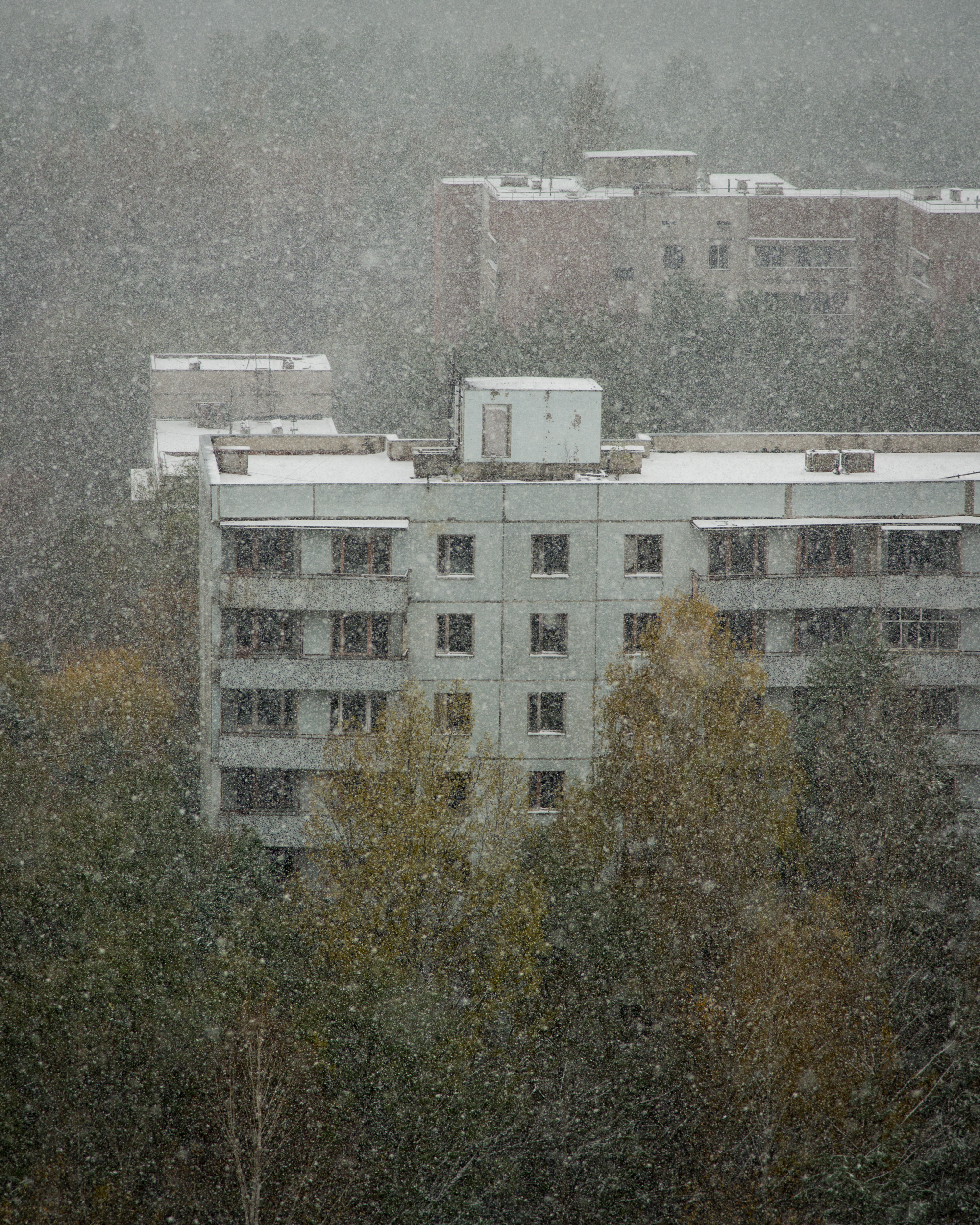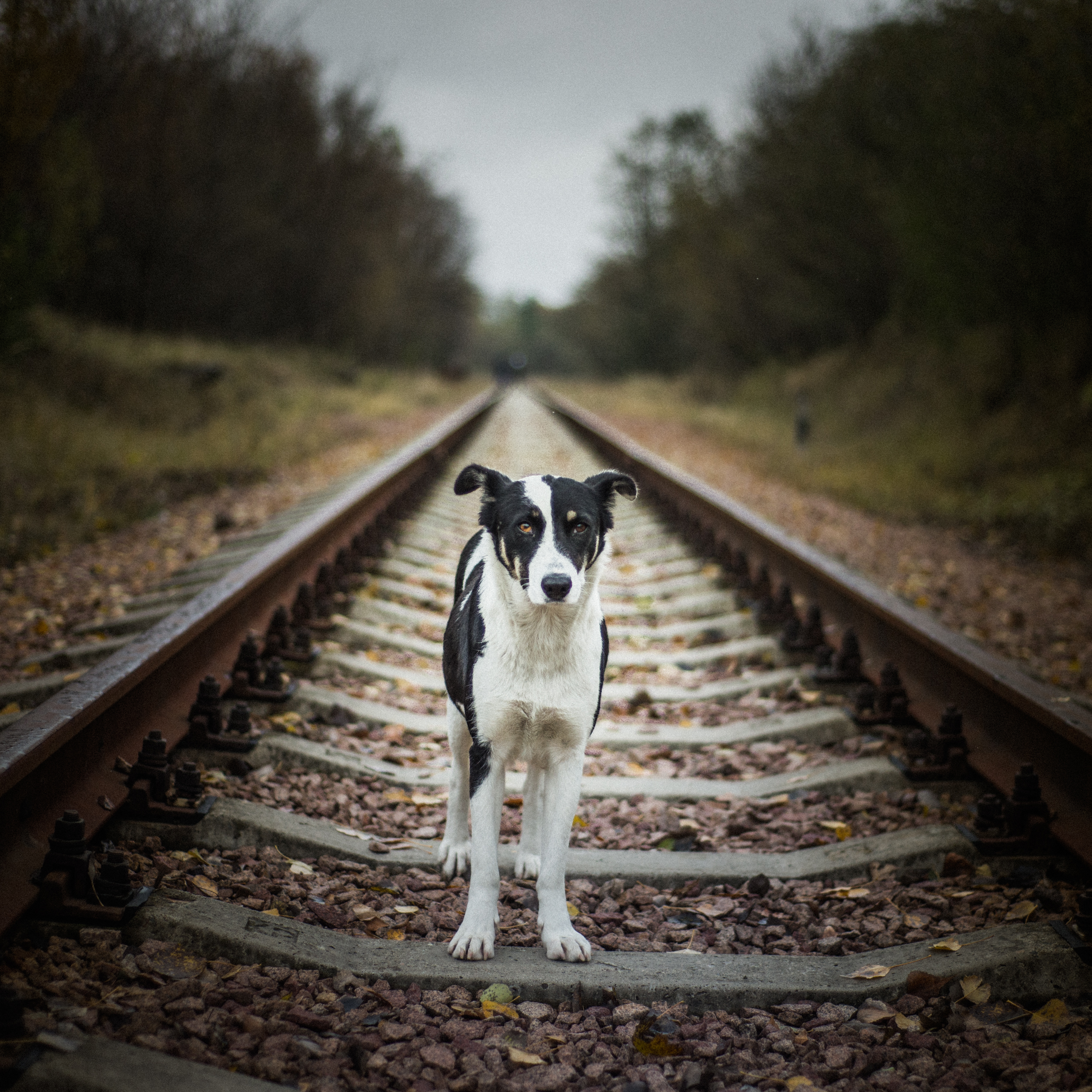3 days in Chernobyl
I was hesitating to write about tourism in Chernobyl Exclusion Zone, since I worked so much on the topic and it has such a personal touch for me, that I wasn’t sure I would want to return back to it.
This abandoned Ferris wheel became a symbol of the ghost-town Prypyat. It never operated.
As some of you know, in 1986, aged 1, I was evacuated from the now ghost-town of Prypyat after the explosion on the Chernobyl Nuclear power Plant. My father worked on the plant on the night of the accident (operating a different reactor, though), while my mom and me were sleeping at our home at Lenin Avenue 17, just a few kilometers away from the greatest nuclear disaster of all times.
Me and my mom in front of our former apartment house in Lenin Avenue 17, Prypyat
I went back to Prypyat (or, as you might now it from the Russian transliteration - “Pripyat”) many times, the first visit was back in 2000 with my dad, who went there for work.
I returned in 2011, 2012, 2015 and 2016 while I was working on my book “Prypyat mon Amour”, dedicated to people, who were evacuated from Prypyat. You can order it online or shoot me a message.
In November 2016 I was invited to visit the Exclusion Zone as a tourist for the first time.
I wanted to go - out of natural curiosity and to see, what kind of knowledge people have of the area and what happened and what kind of information they get from the guides.
In November 2016 I visited Chernobyl as a part of the group. Wearing protective suits in the area is not needed, but tourists do it for pictures and dramatic effect
I shot a little vlog (I wasn’t planning a huge film and shot everything entirely on the cell phone) to share parts of my experience with you. I always appreciate feedback!
I constantly get questions from people, who want to visit the Chernobyl Zone, as well as there are many misconceptions, so I would like to clarify some of them.
First question is usually - how dangerous it is to visit, isn't there radiation everywhere?
The answer is not really simple and I won’t bore you with scientific facts – I am not a huge expert on gamma- alpha- and beta-radiation myself, but I will tell you one thing – it is fine to visit Chernobyl Exclusion Zone as a part of a tourist group.
As soon as you are cautious and don’t go where you’re not supposed to – you will be fine. The radiation levels vary, but you literally have to stand still for weeks in one spot to get a doze, which will have any kind of impact on your body. The biggest danger in the ghost-town of Prypyat now are crumbling houses. You have a much higher chance to break a leg or twist your neck, than become a radioactive mutant ninja turtle.
The main danger in the ghost-town are decaying buildings
The biggest dangers in the surrounding territories are the wild animals - also not of a mutant kind. Wolves and wild pigs don’t come out during the day anyways, and most of the tourists have to get out of the Zone by 6 PM anyways.
Second question is how to get there. Is everyone allowed to go?
If you google “Chernobyl tours” you will find many companies, who organise group and private tours to the Zone. They vary in prices (30-200$) and I’d suggest going with a smaller group, but for a mere educational purposes a bus tour from Kyiv will be enough. You can also get a permission to enter the Zone as a journalist, but in any case you will have to plan in advance, send you passport number for approval etc. There is no hop-on hop-off service to Chernobyl. After all it is not a joke.
The checkpoint Dytiatky, which serves as the entry to the Zone is situated 115 km and approximately 2 hours car ride from Kyiv.
Going or not going to the Zone is a personal choice. As I’ve mentioned, one day in the area won’t harm you, but if you’re pregnant, had radiotherapy or were exposed to big doses of radiation in the past, you should consider the risk.
I was exposed to a big dose of radiation in my childhood and I still went several times. My mom didn’t support my decision though.
What is the name of the ghost-town I’ve seen on pictures and videos?
Most people falsely assume, that Chernobyl is the name of the ghost-town from the spooky HDR-pictures and computer games. In fact Chernobyl is a different town, it is situated in the 30-km Zone and you still need to go through the checkpoint to get there, but it is still inhibited by almost 3000 people, who work shifts on the Object “Arch” (the new Sarcophagus over the burned reactor) as well as in the Exclusion Zone.
The spooky abandoned ghost-town is called Prypyat (or Pripyat in Russian transliteration) after the river Prypyat, on which it was built in 1970. It was a very young town of barely 50 000 inhabitants, with the average age of 26 by the 1986. Now, the population is 0.
Do I need protective clothing if I go on a tour to Chernobyl? Do I need a gas mask?
Unless you are working inside the plant, other highly contaminated areas, you absolutely don’t need protective clothing. Most of the radioactive particles are in the ground, and in 30 years they sank deeper than the surface, so there is no need to cover your clothes. Also, LEAVE THE GAS MASK ALONE! Personally, I hate seeing tourists posing with gas masks - gas masks are not meant to protect from radiation and they were never used as protective measures! The only masks which were used were the so-called “petal” respirators (“Lepestok”), which protects from the inhalation of the microdispersed particles.
But the petals don’t look as cool and spooky as the gas masks, thus tourists keep taking pictures with them, misinforming others.
But what about that picture of hundreds of gas masks on the floor of the school?
Just like the black sad dolls and melancholically lying around children shoes are not more than props, compositioned perfectly by amateur (and some professional) photographers, to emphasise the drama, the famous classroom, filled with gas masks has nothing to do with radiation, evacuation or tragical events of the 1986. The gas masks were a crucial part of every Soviet’s school “civil defence” training. In other words - these masks were there for educational purposes and were scattered around not during the evacuation, but much later for that dramatic Hollywood effect.
What is a sarcophagus and is it possible to see the insides of the 4th reactor?
The Chernobyl Nuclear Power Plant Sarcophagus, also named “Shelter Object” is/was a massive still structure, covering the remains of the 4th reactor of the plant. It was constructed in 1986 in the period of 200 days to protect the environment from the continuous radioactive contamination, cause by the radioactive fuel and tonnes of radioactive materials inside of the ruined reactor (as you might know, some types of radiation don’t disappear for billions of years). The old sarcophagus was built as a temporary measure and wasn’t supposed to last for longer than 30 years - repairing it wasn’t an option, since the levels of radiation inside the structure exceed the limits by far.
Old sarcophagus - as of November 2016 the new "Arch" structure was shifted over the shelter
Unless you are a scientist or a National Geographic photographer with a very special permission from the government – YOU CANNOT GET INSIDE THE 4TH REACTOR. 4th Reactor Hall is a place which contains huge amounts of radiation and even with all the protective clothing you can get, you won’t be able to stay inside the remains of the reactor unharmed for longer than 2 minutes at a time. Otherwise – acute radiation poisoning, and slow, painful, torturous death. To be more specific - the radiation levels inside exceed 10 000 röntgens per hour, while the lethal dose for a human is 500 röntgens over 5 hour course).
How much time do I need for a Chernobyl tour?
As I’ve already mentioned, Chernobyl Exclusion Zone is very vast. The most popular route is the Chernobyl - Sarcophagus of the 4th reactor - Prypyat ghost-town. Since the entry to the Zone is 116 km from Kyiv, it is a day-tour. You can also book longer tour, where you will visit abandoned villages and some other remote parts of the Zone. There up to 7-days tours.
Can I get inside the Exclusion Zone without a permission?
Theoretically you can and many adventure-seekers do. Keep in mind, that it is a restricted territory, and going without permission is considered trespassing under the Ukrainian law. Not to mention, that it can be really dangerous to walk around alone - there are radioactive spots, wild animals and little help available, if you get lost or injured in some remote area.
Can I eat/drink inside the Exclusion Zone?
Guides will advice you not to eat inside the 10-km Zone. Some micro-particles can get onto your food and you better avoid that kind of risk. But If you stay overnight in one of two hotels in Chernobyl, there are hot meals available as well as couple of Soviet-style grocery shops in the area. The food is delivered from the outside, for obvious reasons. When you walk around the Zone in autumn, you will stumble upon old apple- pear- and apricot-trees, full of fruits - they look edible and picturesque, but I will strongly advice you not to touch them.
It's harvest time, but no one is picking these apples
I’ve seen people living in the Zone? Who are they? Do they have electricity, water etc? Why aren’t they all dead from radiation or mutated into monsters?
There are people living inside the Exclusion Zone indeed. As I’ve already mentioned, there are plenty of personnel from the Chernobyl Nuclear Power Plant (which was conserved in 2000, but still needs a lot of maintenance - you cannot just drop everything and run away).
There are people, though, who returned to the abandoned villages surrounding the Plant. The villages were evacuated, just like the ghost-town Prypyat, with people leaving all their belongings, cattle, furniture etc behind. Many didn’t adopt to the new conditions or were mistreated and decided to return. Most of them returned couple of months or years after the accident. There were thousands of so called “samosely” (self-settlers) in the beginning, but now the count is low - officially its is couple of hundreds, spread around the Zone. Most of these people are in their 60s and 70s and die from natural causes.
They grow their own food, gather mushrooms and brew moonshine, but are also supported by the government and get the pension, just like any other elderly citizens. Once a week a kiosk-on-wheels would drop buy bringing goods from the city, but many tourists visit samosely every day, bringing them presents and food.
I’ve made friends with baba Gania, who lives in the Zone with her handicapped sister Sonya. She fed me potatoes and sauerkraut, as well gave me a bottle of her special Chernobyl moonshine. I know, there was a risk, but I couldn’t say no to her hospitality.
Under a current law, new people are prohibited to resettle to the Zone. Nevertheless there are always plenty of visitors and some relatives tend to come for summer months, using an opportunity to relax away from the city life in the (bit radioactive) nature paradise.
Are there monsters/mutants in the Exclusion Zone? Did a lot of people get sick?
No. There were some mutations registered in the past, but no two-headed wolves or plasma blurbs are running around.
"Monsters" of the Chernobyl Exclusion Zone
It is hard to connect radiation to health issues directly. Many women, who were pregnant at the time were almost forced to get abortions, but I know a few, who didn’t and they had healthy children and now healthy grandchildren.
Even though it is hard to link radiation directly to diseases, but the rates of thyroid cancer and leukaemia grew drastically after the accident in the affected area. Southern Belarus was affected by the so called “Northern path” of the radioactive cloud, caused by the accident the most, and much higher than usual rates of birth defects are observed in the areas. The affects of radiation can be traced years and years after the accident. While working on my book “Prypyat mon Amour”, I’ve met many people, who were evacuated from the Zone, and almost everyone had a relative, who died young from some kind of cancer. So did my father in 2006. He was 47 years old.
As a person, who was a part of the tragedy, what do you think of tourism into the Exclusion Zone? Isn't it some form of disrespect for the dead/affected?
I think that tourism to places of great disasters should be not only tolerated by promoted. People need to see the results of the dangerous activity of human beings, to avoid such mistakes and tragedies in the future. I am also a curious person, and was interested to see some of the aspects I’ve never thought about or seen before (like the “Russian Woodpecker” radar station). meeting the “samosely" (self-settlers) was also a very unique experience, since instead of some philosophical wisdom, one would probably expect from such secluded members of society, you get that they are normal people, with average human needs, desires and interests.
Nevertheless, I am totally against senseless tourism, with no understanding or feeling of responsibility. I’ve observed many young tourists treating Chernobyl as some kind of extreme playground. I think it is very important to educate young people of what happened, why it happened and why it should never happen again.

















